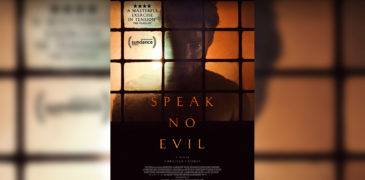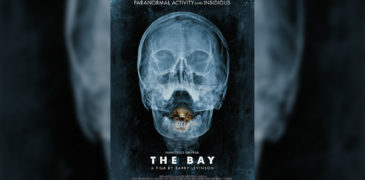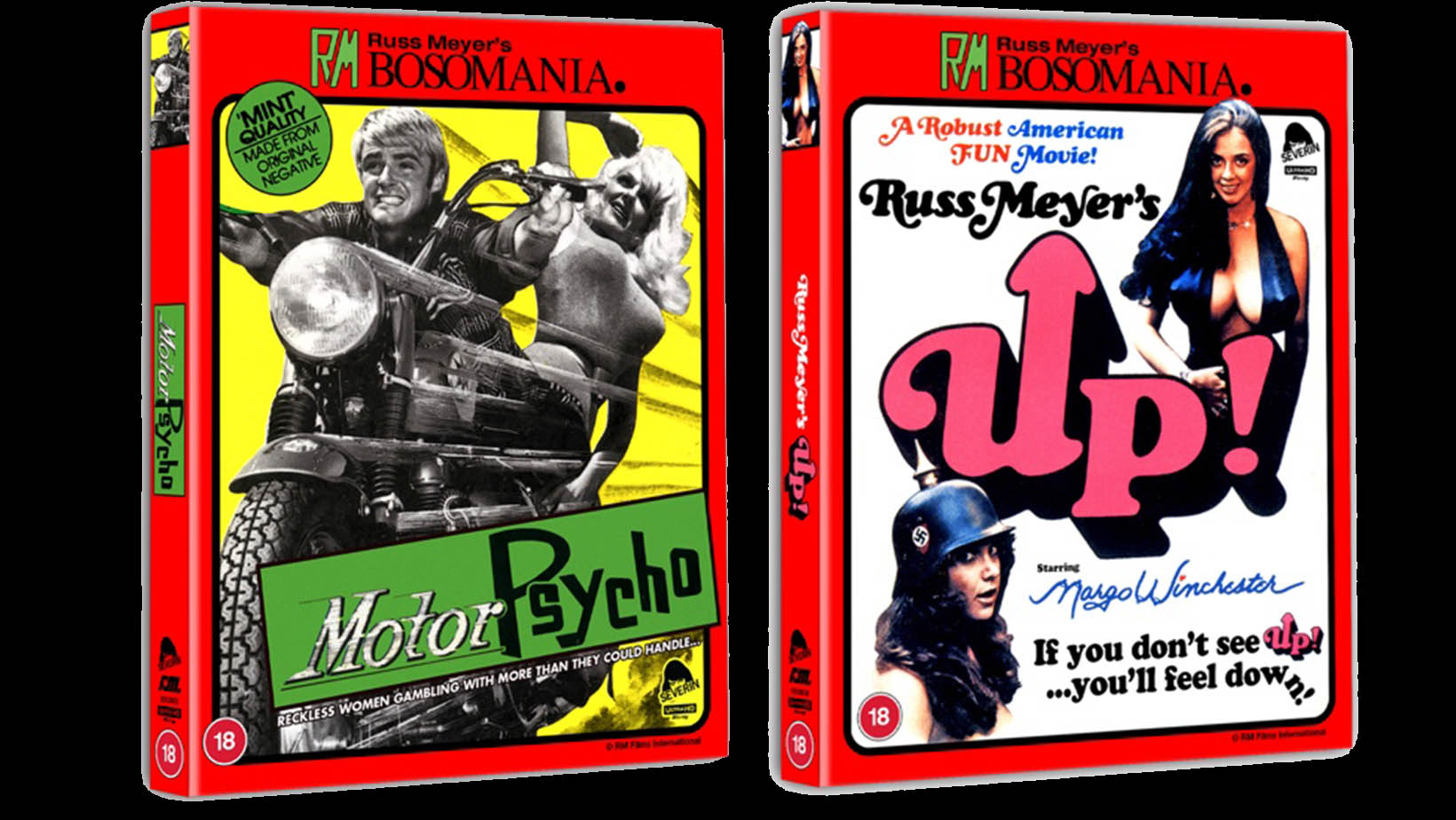
To me, the greatest American rock and roll band will always be The Cramps. Led by singer Lux Interior and guitarist Poison Ivy Rorschach, draped in vintage Frederick’s of Hollywood outfits, fueled by their schlocky B-movie obsessions, and lyrics brimming with enough double-entendres to make Mae West blush, the Cramps delivered a masterclass in glorious trash culture, the kind of rebellious art that would never find its way into the New York Times’ arts section.
Like the call of a strip-club barker, these lowbrow thrills promised an ample serving of the forbidden, the thrill of “a little something you can’t get at home.” This vibrant and crass entertainment comes from salacious films cast from low budgets and primal songs originating in someone’s garage. Within this low-down, dirty arena of such unsophisticated pleasures, the visceral was celebrated, jolting audiences with electrifying energy to make them lose their seat and move their feet.
This intoxicating blend of the transgressive that the Cramps embraced resonated deeply within me. A track on their 1983 album, Smell of Female (we’ll get to that title’s lurid story later) laid out a narrative of stunning women in fast cars, “breaking joculatory (sic) jock type, he-men men’s spines,” in their untamed and amoral quest for new kicks. The song was a cover of an almost forgotten track by an even more obscure garage band called The Bostweeds. Almost forgotten but for one key connection: The song was the title and opening theme of exploitation auteur Russ Meyer’s 1965 cult masterpiece Faster Pussycat! Kill! Kill! (1965).
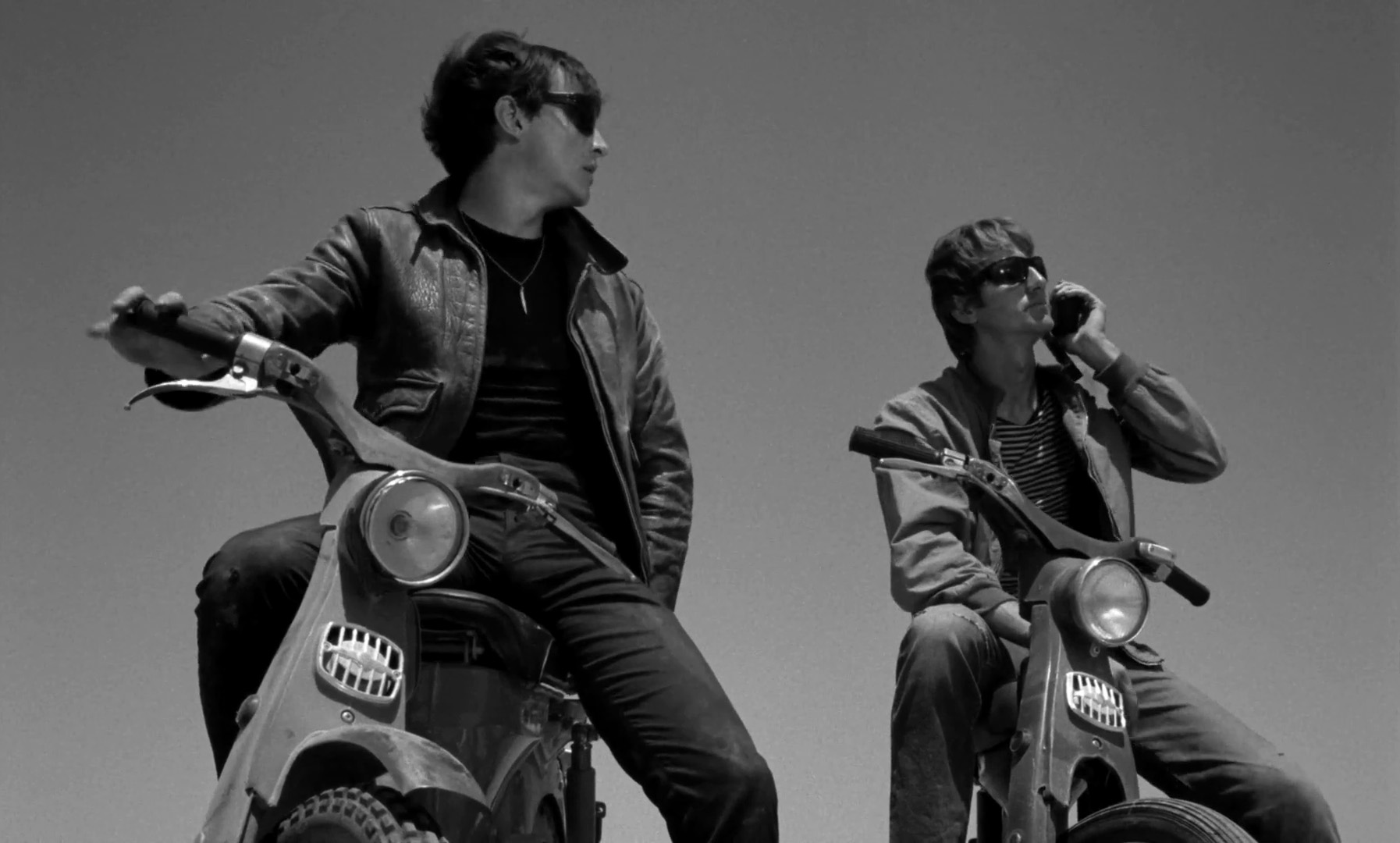
The nihilistic tale of Faster Pussycat follows three go-go dancers careening through the desert in their sports cars, on a murderous rampage. I discovered the film behind the song when I read John Waters’ interview with Russ Meyer in his book Shock Value. A highly enthusiastic fan of Meyers and Faster Pussycat, Kill! Kill!, Waters declared the film, “beyond a doubt, the best movie ever made.”
It was from there that my journey into the sexy, forbidden world of exploitation cinema began. The film crackled with brutal dialogue and unforgettable characters. Varla (the fierce Tura Satana), the leader of the gang, iconic in her skin-tight black outfit, luscious decolletage on display, lashed out with venomous words as sharp and deadly as the switchblade she wielded. The tone was set by the opening sequence: An unseen narrator ominously warns against the seductive dangers of unbridled female desire and the promise of violence. Specifically, the deadly allure of “smell of female,” the very words the Cramps chose to name their 1983 album, was the siren call to disaster.
This initial plunge into Meyer’s lurid world, with its potent blend of sexuality and violence, was just the beginning of my exploration into the work of a filmmaker driven by a lifelong passion for cinema and obsession with powerful and deadly women. Russ Meyer, born in 1922, embarked on his filmmaking journey at the remarkably young age of fourteen. After serving as a combat cameraman during World War II and working as an industrial filmmaker, he earned a reputation as a glamour photographer, including photographing several Playboy centerfolds before breaking into feature films.

According to Waters, a Russ Meyer film is “instantly recognizable – top-notch production values, split-second editing, low-angle shots leering up at almost deformed, big-busted, domineering sex-starved heroines, and plot lines so ludicrous that all you can do is laugh along.” The Immoral Mr. Teas (1959) and Eve and the Handyman (1960), Meyer’s first commercial films, were pioneers of the “nudie-cutie” sexploitation sub-genre. They were among the first movies since the moral strictures of the Hays Code went into effect in 1934, aside from documentaries about nudist colonies to show nude female bodies.
Those early films were lighthearted comedies that indulged in the male fantasy of being pursued by desirable, lustful, sexually frustrated women. However, by the mid-1960s, Meyer’s work shifted towards darker, more serious narratives. While his signature obsessions remained, these later works explored complex themes such as racism, the destructive forces within the entertainment industry, the enduring trauma of the Vietnam War on veterans, and the personal costs of greed and revenge. Meyer’s unflinching exploration of sex and eroticism frequently ignited controversy, leading to numerous obscenity trials. But his films always made money.
For years, these films languished in obscurity, available only in grainy VHS copies or poorly mastered DVDs. As a fan who wanted to see his movies, I had to buy DVDs of Faster Pussycat! and Beyond the Valley of the Dolls (1970) from a French distributor in the early 2000s. But thanks to the tireless efforts of boutique video preservationists, Severin Films, longtime fans and newcomers alike can now fully immerse themselves in Russ Meyer’s world of curvaceous women, hapless men, and fast cars.
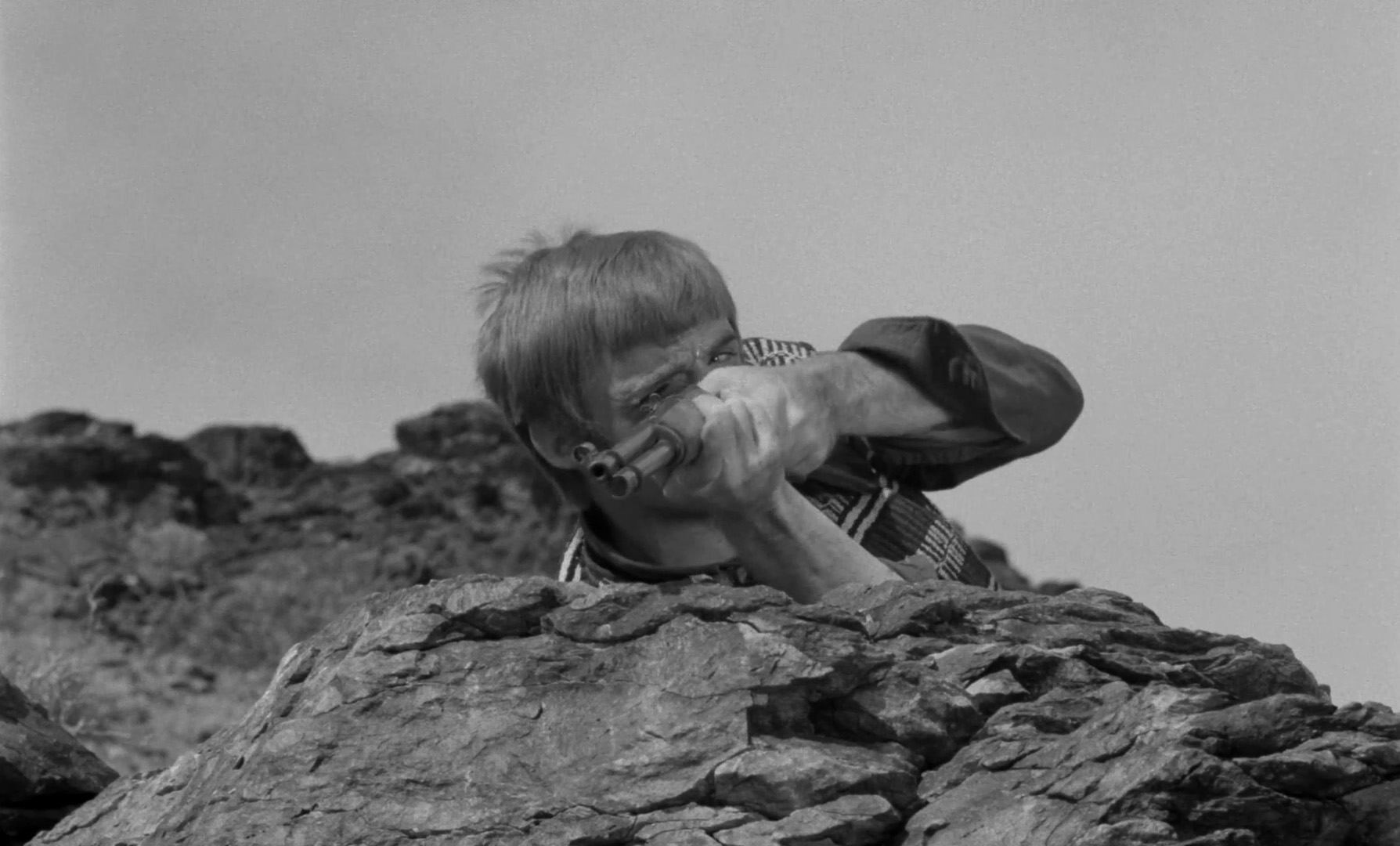
In Meyer’s biography Big Bosoms and Square Jaws by Jimmy McDonough, long-time fan William Rostler succinctly describes Meyer’s formula, “…people filmed at top hate, top lust, top heavy.” This potent combination, along with Meyer’s well-documented mazophilia (a fascination with large breasts), is aptly reflected in the Severin Films’ collection: Russ Meyer’s Bosomania (Press release here). This set presents five of his key films – Motorpsycho, Up!, Vixen, Supervixens, and Beneath the Valley of the Ultravixens – in stunning new 4K scans sourced from the original negatives, meticulously restored by The Museum of Modern Art. Furthermore, each UHD/Blu-ray multi-disc set is enriched with a wealth of special features created in association with The Russ Meyer Trust.
These films are rowdy, raucous, and apologetically aimed at primal pleasures, blending sex, violence, and satire with relentless abandon. Severin Films provided The Grimoire of Horror with previews of Motorpsycho (1965) and UP! (1976) for review. The film prints were pristine, showcasing clear photography that underscored Meyer’s often-overlooked talent as a cinematographer, complemented by an excellent mono soundtrack.
Motorpsycho (1965) plunges viewers into a grim world of sadistic bikers on a violent rampage. The husband (a young Alex Rocco in his debut) of one of their victims relentlessly pursues them. Meyer’s masterful camera work and sharp editing by Charles Schelling expertly escalate the tension as the bikers’ desperation fuels their increasing brutality, mirroring the husband’s mounting rage, culminating in an explosive desert showdown. Even six decades later, Motorpsycho‘s raw intensity remains potent, particularly the harrowing scenes of the bikers’ cruel torment of Rocco’s wife. This visceral drama paved the way for Meyer’s next venture, the female-led inversion of this very premise: Faster Pussycat, Kill! Kill!
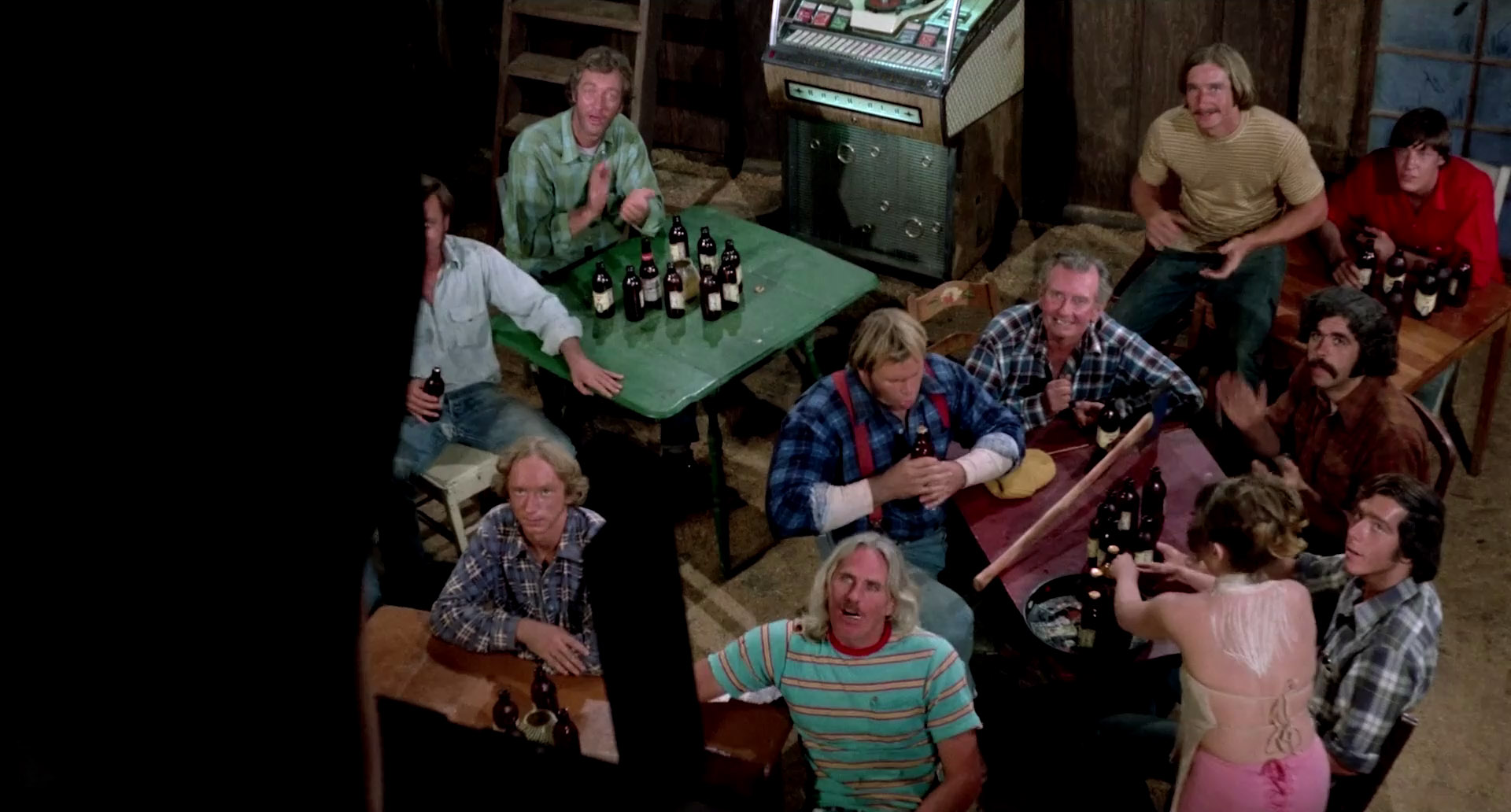
Leaving the black and white desert behind, Russ Meyer’s Up! (1976) takes place in the lush and green Northern California woods. A satirical drama structured like a Greek farce, Up! features longtime Meyer collaborator and companion Kitten Natividad as the nude Greek Chorus within this bizarre framework. Despite its overtly comedic treatment of numerous sexual encounters – aiming for amusement rather than titillation – Up! jarringly incorporates a significant element of sexual violence that may deeply trouble modern sensibilities.
I’m grateful to The Grimoire of Horror for the opportunity to revisit and explore the fascinating careers of several directors and genres who have left a lasting impression on me, from the allure of Swedish sexploitation and the captivatingly strange worlds of Paul Naschy and Alejandro Jodorowsky, and the dreamlike beauty of Jean Rollin’s films. Now, turning my attention to Russ Meyer, thanks to Severin Films’ Bosomania collection, another neglected filmmaker is given his due. It is a great pleasure to observe his undeniable skill as a filmmaker, often juggling the roles of director, writer, and editor with considerable talent. However, while acknowledging his technical prowess, it’s impossible to ignore the aspects of his work that feel jarring today, particularly the often-crude and exploitative depictions of rape and female sexuality. Yet, focusing solely on these problematic elements risks missing the broader picture: a filmmaker who, through his unapologetic lens, stripped away the veneer of polite society to expose the raw, desperate desires of men and women navigating their violent, challenging worlds with urgent, unrelenting passion.
Russ Meyer’s Up! (1976) and Motorpsycho (1965) are available to purchase in UHD and 4K from Severin Films’ Website now.
More Film Reviews
Following an Italian family vacation, Danish trio Bjorn (Morten Burian), Louise (Sidsel Siem Koch), and their young daughter take up an invitation to visit the Netherlands, at the behest of… Oh, the level of alleged and legitimate prestige Dreamcatcher boasts – directed and co-scripted by Lawrence Kasdan (Body Heat) with the help of William Goldman (Marathon Man) from a novel… Although the first thing that comes to mind would be to honour the classic camp slashers or creature-feature flicks, I decided to welcome summer with Barry Levinson’s The Bay (2012)… Mors Omnia Solvit (aka “Frammenti – I Veneratori di Morte”) is an Italian extreme satanic horror film directed and produced by Congrega Esoterica Padovana. The name is based on a… Cory Pratt’s Hide (2025) is a perfect mix of graphic imagery and careful restraint. In just a short runtime (less than 20 minutes), it manages to say more than many… Weddings can be stressful; add in a drunken blowjob for the groom from a vindictive stranger and an obnoxious employee overstepping social boundaries, and, for couple Shane and Leah, it…Speak No Evil (2022) Review – The Subversion of Bourgeois Expectations
Revisiting Dreamcatcher: Bros in the Woods on an Oxy Trip
The Bay (2012) Film Review – Sitting at the Dock of the Bay
Mors Omnia Solvit Film Review – Yes Today, Satan
Hide (2025) Film Review – Short, Sharp, and Served Rare
Crumb Catcher (2023) Film Review – Believing Your Own Bulls*** is Half the Battle
I am a lifelong lover of horror who delights in the uncanny and occasionally writes about it. My writing has appeared at DIS/MEMBER and in Grim magazine. I am also in charge of programming at WIWLN’s Insomniac Theater, the Internet’s oldest horror movie blog written by me. The best time to reach me is before dawn.

